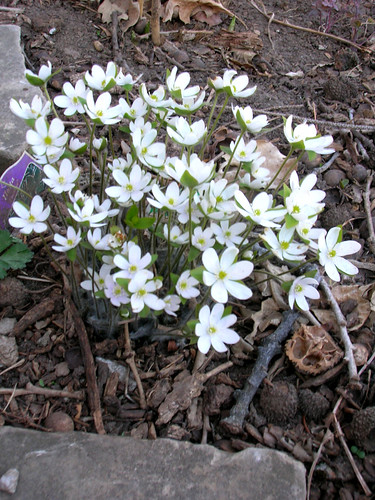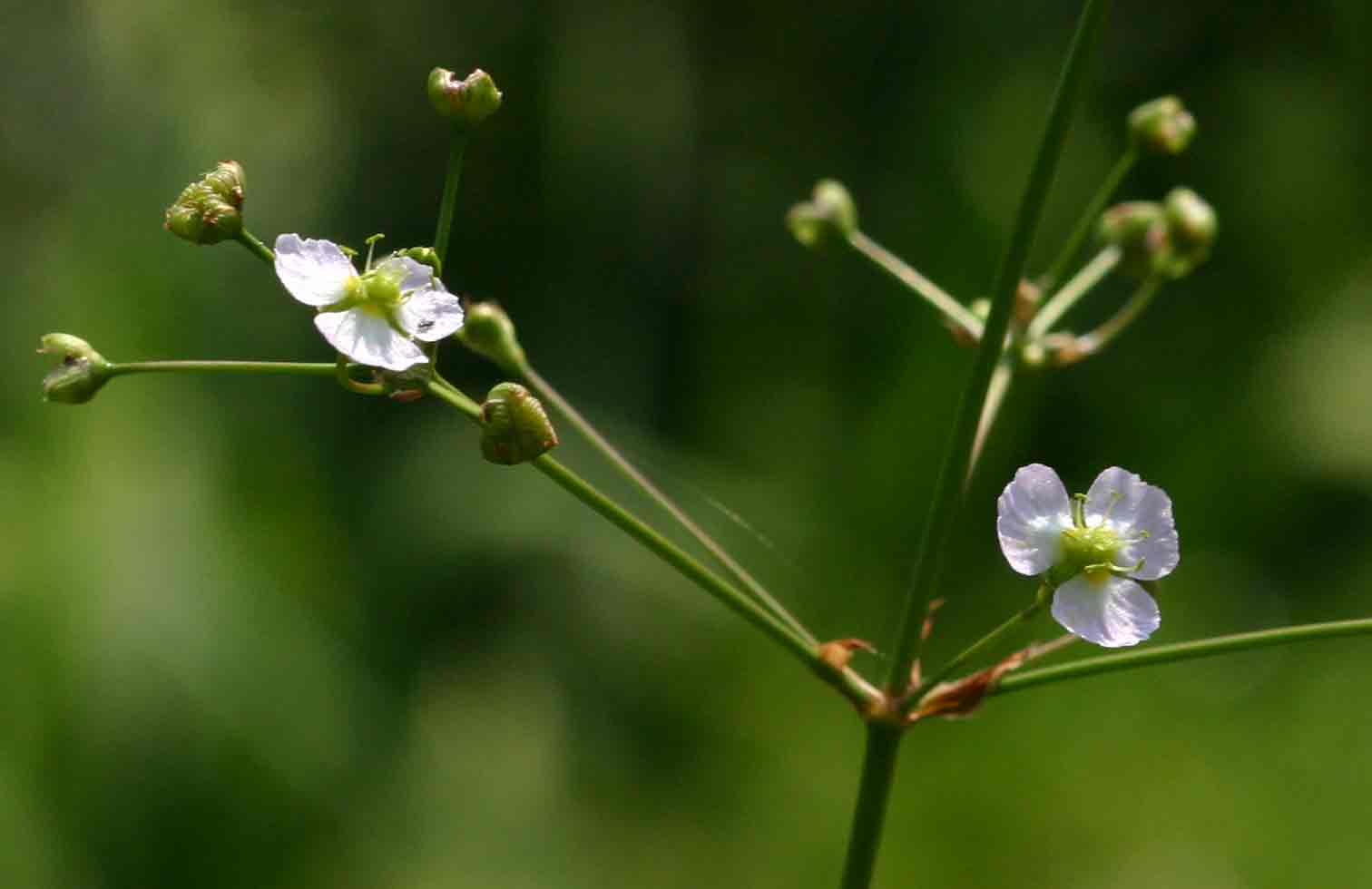ALOE (Aloe vera (L.) Burm. f.) (Gel) ++

Synonyms — A. barbadensis Mill., A. perfoliata var. vera L., A. vulgaris Lam.
The gel is used folklorically, and the dried inner leaf juice pharmaceutically as a laxative. There
is much confusion resulting from different interpretations by botanists, chemists, collectors,
herbalists, pharmaceuticists, physicians, and taxonomists. I don’t know the herbalist or taxonomist
who can identify aloe to species by its latex or leaves alone. Here, I have tried to sort
out what I think was intended by the authors, mostly also compilers like myself, interpreting
the studies of others. Potter’s New Cyclopedia tried to straighten things out by calling the gel
“aloe vera” and the purgative powder “aloes.” Fleming (1998) aggregates it all inextricably,
dried and fresh leaf juice, whole leaves, and the gel (PHR, PH2). It’s even botched in the Bible,
according to Biblical scholars. Aloe in the Old Testament is said to be Aquilaria, while that of
the New Testament is said to be our Aloe vera.
Activities (Aloe) — Abortifacient (1; WO3); Analgesic (1; PH2); Antiaggregant (f; CRC);
Antiaging (f; WO3); Antialcoholic (1; WO3); Antibacterial (1; APA); Antidote, alcohol (1; WO3);
Antiedemic (1; CAN; WHO); Antiherpetic (1; AAB; PH2); Antihistaminic (1; APA); Antiinflammatory
(1; AAB; CAN; PH2; WHO; WO3); Antiplaque (f; WO3); Antiprostaglandin (1; WHO);
Antiseptic (1; CRC; PH2); Antithromboxane (1; PH2; WHO); Antiulcer (1; AAB; PH2); Antiviral
(1; AAB; PH2; WO3); Antiwrinkle (f; WO3); Aperient (f; DAA; DEP); Arylamine-N-Acetyltransferase-
Inhibitor (1; PH2); Bitter (f; PED); Cholagogue (f; CRC); Collagenic (1; PH2);
Cyclooxygenase-Inhibitor (1; PH2); Demulcent (1; WAM); Depurative (f; CRC); Digestive (1;
CRC; WAM); Emmenagogue (1; DAA; MPI); Emollient (1; WAM); Fungicide (1; APA; PH2);
Hemostat (1; WO3); Hypocholesterolemic (1; WO3); Hypoglycemic (1; CAN); Immunomodulator
(1; PH2); Insecticide (f; CRC); Larvicide (f; CRC); Laxative (1; PH2; WAM); Microcirculatory
Stimulant (f; CAN); Mitogenic (1; WO3); Moisturizer (1; CRC); Nematicide (1; CRC);
Phagocytotic (1; CAN; PNC); Propecic (f; KAP); Radioprotective (1; MPI); Stimulant (f; CRC);
Stomachic (f; CRC; MPI); Tonic (f; MPI); Tyrosine-Kinase-Inhibitor (1; PH2); Vermifuge (1;
MPI); Vulnerary (1; CAN; WAM; WHO; WO3).
A Indications (Aloe; gel only) — Abrasion (1; WHO); Abscess (f; CAN); Acne (f; CRC; WHO);
Acrochordon (f; CRC); Adenopathy (f; DEP); Alcoholism (1; WO3); Alopecia (f; CRC; KAP);
Amenorrhea (f; CRC; PH2); Anemia (f; WHO); Apoplexy (f; DEP); Arthrosis (1; CAN; WO3);
Asthma (1; CAN; KAP; PNC); Bacteria (1; APA; PH2); Bleeding (1; CRC; WO3); Blindness
(f; WHO); Boil (f; AAB); Bronchosis (1; CAN; WO3); Bruise (1; WHO); Bug Bite (1; APA);
Burn (1; AAB; CAN; WAM; WHO); Cancer (1; FNF, JAD; JLH; PH2); Cancer, anus (1; CRC;
JLH); Cancer, breast (1; CRC; JLH); Cancer, larynx (1; CRC; JLH); Cancer, lip (1; CRC;
JLH); Cancer, liver (1; CRC; JLH); Cancer, lymph (f; DEP); Cancer, nose (1; CRC; JLH);
Cancer, skin (1; CRC; JLH); Cancer, stomach (1; CRC; JLH; PH2); Cancer, tongue (f; JLH);
Cancer, uterus (f; CRC; JLH); Childbirth (f; CRC; DAA); Cold (f; CRC); Colic (f; KAP; PH2);
Condyloma (f; CRC; JLH); Conjunctivosis (f; DEP; PHR); Constipation (adult only) (2; DAA;
PH2; WAM); Convulsion (f; CRC); Cough (f; APA; CRC; KAP); Decubitis (f; AAB); Dermatosis
(1; PH2; WHO; WO3); Diabetes (1; APA; CAN); Dysmenorrhea (f; KAP); Dyspepsia (f;
CRC); Eczema (f; CAN; CRC); Enterosis (f; CRC; WO3); Epilepsy (f; KAP); Erysipelas (f;
CRC); Fever (f; DEP); Frostbite (1; APA; PH2; WHO); Fungus (1; AAB; APA; MPI; PH2);
Gastrosis (f; CRC; WO3); Gingivosis (f; WO3); Glaucoma (f; WHO); Hemorrhoid (f; APA;
CRC; WHO); Hepatosis (f; CRC; DEP); Herpes (1; AAB; PH2); High Cholesterol (1; WO3);
HIV (1; WO3); Hyperglycemia (1; CAN); Hysteria (f; CRC); Immunodepression (1; CAN;
PNC); Indigestion (1; WAM); Infection (1; APA; PH2); Infertility (1; CRC; MPI); Inflammation
(1; AAB; CAN; CRC; PH2; WHO; WO3); Ischemia (1; PH2); Itch (f; DAA); Jaundice (f;
CRC); Leukemia (f; CRC; JLH); Mouth Sore (1; CAN); Mycosis (1; APA; FNF; PH2; WHO);
Ophthalmia (f; DEP); Pain (1; PH2); Peptic Ulcer (1; CAN; CRC); PMS (f; APA); Proctosis
(f; CRC); Psoriasis (2; CAN; PH2; WHO); Radiation Burn (1; CRC; DAA; WHO); Rash (1;
AAB); Rheumatism (f; WO3); Ringworm (1; APA); Salmonella (1; CRC); Seborrhea (f; WHO);
Splenosis (f; DEP); Staphylococcus (1; CRC; PH2); Stomatosis (f; JLH); Streptococcus (1;
CRC); Sunburn (1; AAB; PNC; WAM); Swelling (1; CAN; WHO); Syphilis (f; PHR); Trachosis
(f; WO3); Tuberculosis (1; DAA; KAP); Tumor (1; CRC); Ulcer (1; AAB; APA; PH2; WAM;
WHO; WO3); Uterosis (f; CRC); Vaginosis (f; APA); VD (f; CRC); Virus (1; AAB; PH2;
WO3); Wart (f; CRC; JLH); Worm (1; CRC; MPI; PH2); Wound (1; APA; CAN; CRC); Wrinkle
(f; WO3).
Dosages (Aloe) — 50–200 mg powder (APA); 50–300 mg powder in a single dose at bedtime
(AHP); 1 tbsp gel 3 ×/day (APA); 25 mg in 701 mg soybean oil, 1–2 softgels 3 ×/day; apply
topically; or 1 tbsp juice after meals (SF). Aloe gel, Barbados aloe, and Aloe powder contain,
respectively 4.87, 4.65, and 4.21% aloin, and 2.2, 2.1, and 2.03% aloe emodin.
Contraindications, Interactions, and Side Effects (Aloe) — Gel Class 1 Internally; Gel
Class 2d Externally (AHP); Powder Class 2b, 2c, 2d. Anthraquinones may be purgative and
GI tract irritant (CAN). Commission E reports contraindications, adverse effects, and interactions
of anthranoid laxatives (AEH). Because of its laxative and reputed abortifacient actions,
its use in pregnancy and lactation is to be avoided. However, they suggest that topical, but not
oral, application may be okay in pregnancy and lactation (CAN). The latex can be a drastic
laxative. Contraindicated for pregnant women and children (LRNP). Do not use internally in
pregnancy (WAM). Do not use with undiagnosed abdominal pain (WAM). Do not use internally
for more than 10 days (WAM). Epidemiological studies in Germany reveal that abusers of
anthranoid laxatives have three times higher rate of colon carcinoma (AEH:115). May cause
allergic dermatosis. Taken in excess may result in ulcers or irritated bowels (TMA, 1996).
Hypoglycemic. Naturopaths Yarnell and Meserole (1996) state that people allergic to aloe may
develop a severe rash following its application. Alcoholic extract at 100 mg/kg for 3 months
toxic in mice (AAB).
Clinical (Aloe) — A nondialysable fraction (with mixed polysaccharides) enhances phagocytosis
in adult bronchial asthma (perhaps due to endogenous cyclooxygenase synthesizing prostaglandins
especially PGE-2, with some TXB-2, PGD-2, PGF-2, and 6 keto-PGF-1b). ZPGE2 has been
associated with the beneficial effect on asthma. Gel reported effective in mouth ulcers. Gel preparations
reported effective against peptic ulcers (unless stress-induced), radiation burns, and skin
ulcers, ineffective against stress-induced gastric and peptic ulcers. Healing wounds (10 mg/kg scu
rat; 100 mg/kg scu mouse).
Read more...

















 HHB); Hypotensive (f; PH2);
HHB); Hypotensive (f; PH2); 























